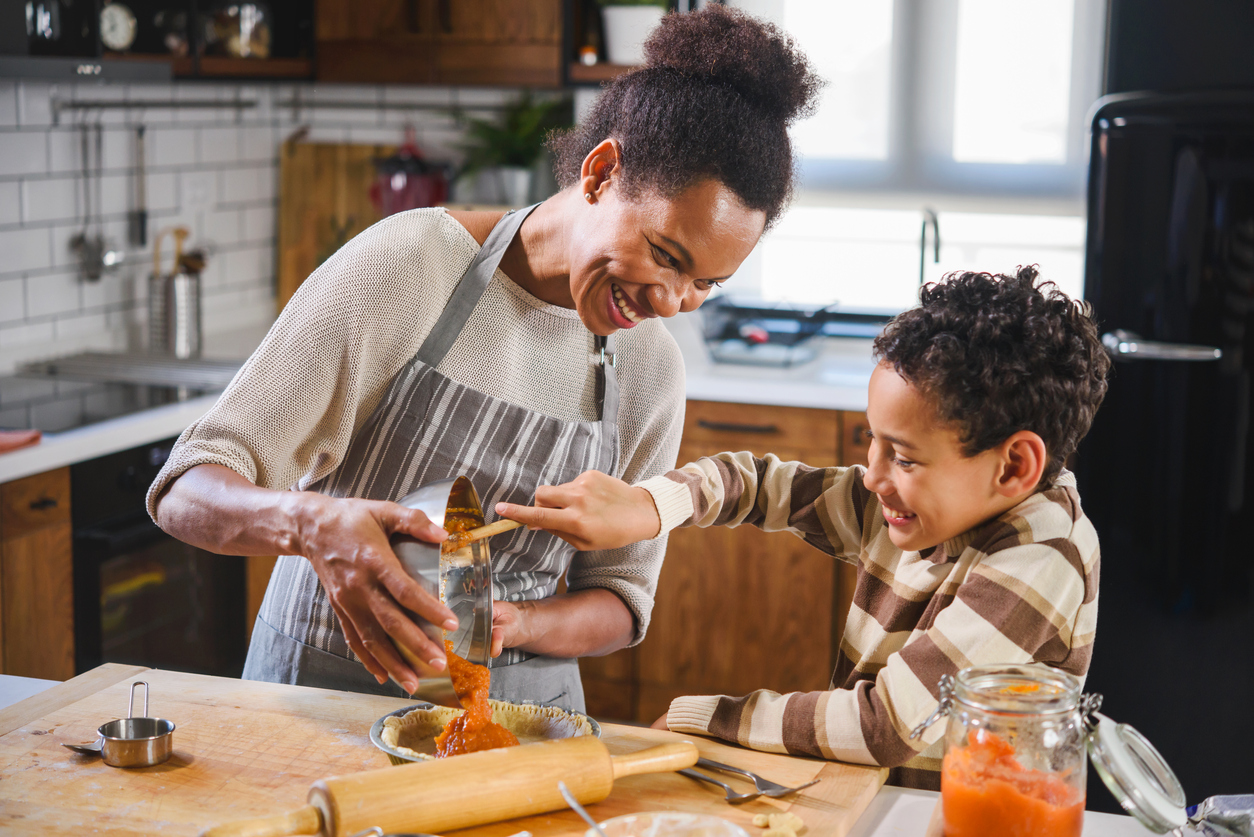
Kids can learn to develop knowledge and excitement around healthy eating when they become more involved in the kitchen. Teaching children to cook from a young age encourages them to continue to thrive in the kitchen and develop healthier eating habits as they grow older. This article will be addressing the several life skills kids can gain through cooking and tips on how you can create positive cooking environment for your child.
Cooking provides an avenue for children to learn a variety of important developmental skills beyond just food skills. Through cooking, children can practice healthy eating by understanding what goes behind the final product and by creating balanced meals and snacks. Children can also learn basic food skills, such as mixing, scooping and chopping if they are old enough to use a knife. Other skills are developed and practiced while in the kitchen, such as: social skills (working with others while spending quality time in the kitchen and learning the responsibility and importance of cleaning up afterwards), language (writing grocery lists and reading recipes), math (measuring ingredients), science (understanding food chemicals and physical reactions), and social studies (learning the origin of where the food comes from and where it is harvested around the world).
Tips to a Positive Cooking Environment
- Hand Washing – The first step before you start cooking in the kitchen. Teaching children to wash their hands before working with food is an important lesson in food safety.
- Choosing Simple Recipes – Try to choose recipes with simple steps that your child can help you with in the kitchen, whether it be picking out the ingredients, mixing or chopping.
- Providing Specific Tasks – Specifying individual tasks that need to be done. This way the child can feel independent in accomplishing what they need to do.
- Pressure-Free Environment – Children might not try everything that is made. They will likely be more interested overall if they do not feel pressured to try the food after cooking it.
- Child-Friendly Kitchen – Organizing an area of the kitchen where the child feels comfortable and has a few of their own cooking tools (such as a wooden spoon, a mixing bowl, etc.). Allowing the child to use their own utensils and have their own cooking area will give them the chance to feel independent and successful in the kitchen.
Age Appropriate Cooking Examples
Ages 2-3 – Choosing, washing and adding ingredients.
Note: Some young children may even enjoy simply holding cooking utensils while watching you cook.
Ages 3-4 – Mashing softer foods, mixing ingredients, making their own simpler items (for example, a sandwich).
Ages 4-6 – Cracking and beating an egg, slicing/chopping softer foods with a plastic knife.
Ages 6-8 – Tossing salad with dressing, creating a smoothie or fruit salad, making their own cereal bowl, writing out the grocery list.
Ages 8-11 – Cutting food, using the microwave and stove (with supervision) for simple recipes (for example, making quesadillas or grilled cheese).
Start with one of our child-friendly recipes posted on our website.
